Early on I thought the glyphs surrounding the fish-hook in the
texts A, H, P, and Q corresponded to those before noon
(a.m.) respectively in the afternoon (p.m.). Although in Q
there was no afternoon. Why not?
Luckily the extraordinary long text on the Tahua (A)
tablet was among those read in by Metoro Tau'a Ure
for Bishop Jaussen on Tahiti.
... This famous tablet is in excellent condition and is
carved on an oar from an American or European ship. The
wood is European ash (Fraxinus excelsior). It is
one of the four tablets which Bishop Jaussen on Tahiti
showed Metoro Tau'a Ure and let him read for him.
The Bishop used the name 'La Rame' (French for 'the
Oar') for the tablet ...
... Bishop Jaussen on Tahiti had in his
household staff a man from Easter Island who knew
superficially the meaning of the rongorongo signs. He had
earlier been a cook for the last king on Easter Island. This
man was Metoro Tau'a Ure. Bishop Jaussen has
documented what Metoro said when 'reading' four of the
tablets (A, B, C, and E). But the
Bishop interrupted him when he talked too much, and told
Metoro to say only what the glyphs meant. In his
Grundlagen Barthel has reproduced what Bishop Jaussen
noted down when listening to Metoro. I decided (following
Barthel) that this was an important source which should not
be overlooked. I had no difficulty placing in parallel the
words of Metoro with the glyphs, he was fairly consistent ...
|
TAHUA (A) |
|
a1 |
90 |
90 |
b1 |
82 |
82 |
|
a2 |
85 |
175 |
b2 |
85 |
167 |
|
a3 |
76 |
251 |
b3 |
77 |
244 |
|
a4 |
82 |
333 |
b4 |
80 |
324 |
|
a5 |
83 |
416 |
b5 |
80 |
404 |
|
a6 |
84 |
500 |
b6 |
92 |
496 |
|
a7 |
85 |
585 |
b7 |
84 |
580 |
|
a8 |
85 |
670 |
b8 |
84 |
664 |
|
sum |
670 |
sum |
664 |
|
46 * 29 =
1334 |

 |
|
1 he mahute. |
1 he ngaatu |
1 tavari |
|
... The
planting of rushes in the crater lakes is
supposed to have been the work of the
culture hero Ure. Proceeding from
Anakena, Ure planted the top part
of the plant in Rano Aroi, the stem
in Rano Raraku, and the bottom part
in Rano Kau (ME:364) ...
Gaatu, totora reed.
Vanaga. Gaatu 1.
Bulrush, reed. 2. (gatu). Churchill.Gatu.
Gaatu, totora reed. Gatu: 1. To
press, to tighten, to squeeze. 2. To pack
tight. 3. To pull suddenly, to give a jerk.
I ka hakarogo atu, ku eke á te kahi, he
gatu mai, as soon as he felt the tuna
be, he pulled in [the line] with a sharp
jerk. 4. To kick. 5. E gatu te hagu,
to wait for something impatiently (gatu,
breath). 6. Shortly, very soon. He tu'u
gatu, he is coming shortly, he is just
about to arrive. Vanaga. Bulrush, reed.
Gaatu (gatu) 1. To feel of, to
pinch, to throttle with the hands, to touch,
to press (gaatu); gatuga,
pressure; gatugatu, to trample down.
T Mgv.: natu, to press out linen, to
squeeze a person or a sore place. Mq.:
natu, to pinch. Ta.: natu, to
pinch, to bruise. 2. To suppurate. 3.
Gatu mai gatu atu, sodomy. Gatua
(gatu 1), tractable, to press.
Churchill. Scirpus riparius
var. paschalis. Barthel 2.
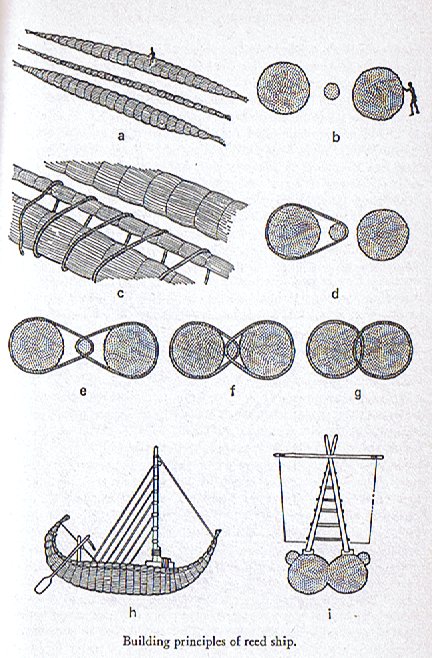
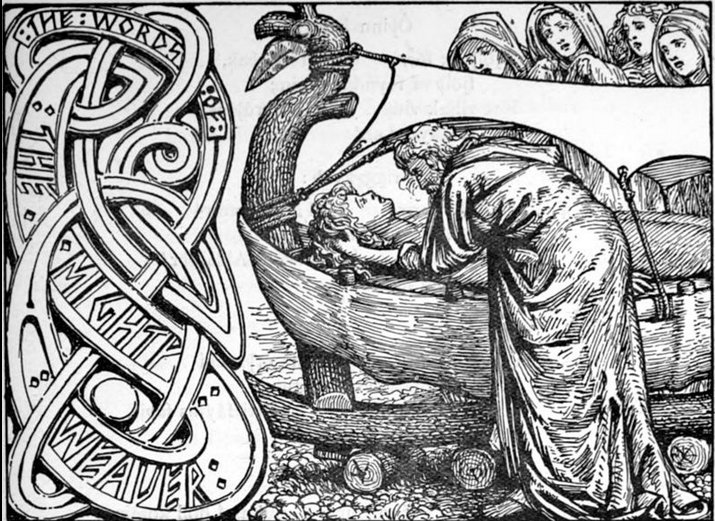
...
All this, which in so many ways
parallels the normal imagery of the Old
World culture-hero myths, telling of the
one who is gone, dwells underground in a
happy, timeless land, as lord of the
realm of the happy dead, like Osiris,
but will rise again, we can read
without surprise. But
what is surprising indeed was the manner
of Quetzalcoatl's actual return.
The priests and astrologers did not know
in what cycle he was to reappear;
however, the name of the year within the
cycle had been predicted, of old, by
Quetzalcoatl himself. Its sign was
'One Reed' (Ce Acatl), which, in
the Mexican calendar, is a year that
occurs only once in every cycle of
fifty-two. But the year when Cortes
arrived, with his company of fair-faced
companions and his standard, the cross,
was precisely the year 'One Reed'. The
myth of the dead and resurrected god had
circumnavigated the globe
...
|
1 |
Cipactli (alligator) |
11 |
Ozomatli (monkey) |
|
2 |
Ehecatl (wind) |
12 |
Malinalli (grass) |
|
3 |
Calli (house) |
13 |
Acatl (reed) |
|
4 |
Cuetzpallin (lizard) |
14 |
Ocelotl (jaguar) |
|
5 |
Coatl (serpent) |
15 |
Cuauhtli (eagle) |
|
6 |
Miquitztli (death) |
16 |
Coz-cacuauhtli
(buzzard) |
|
7 |
Mazatl (deer) |
17 |
Ollin (movement) |
|
8 |
Tochtli (rabbit) |
18 |
Tecpatl (flint
knife) |
|
9 |
Atl (water) |
19 |
Quiahuitl (rain) |
|
10 |
Itzcuintli (dog) |
20 |
Xochitl (flower) |
|
20 * 13 = 260 and 13 * 13 = 169
= 260 - 91.
 |
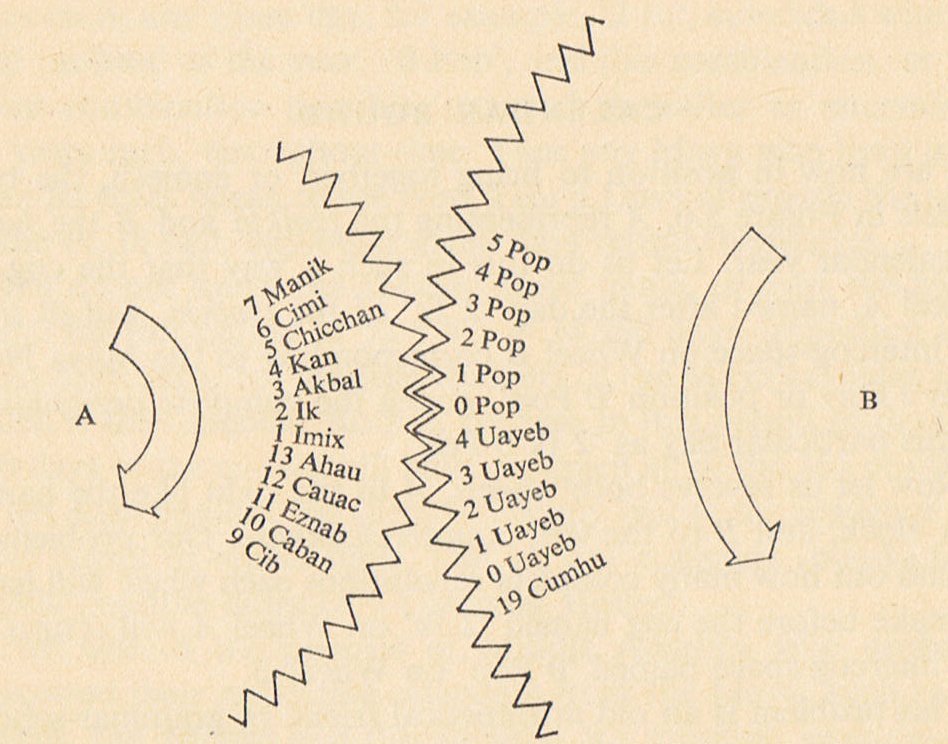
|
|
APRIL 8 |
9 (*19) |
10 (100 =
88 + 12) |
 |
 |
 |
|
Ga1-18 |
Ga1-19 |
Ga1-20 |
|
KHUFU
MINTAKA (Belt)
=
δ
Orionis,
υ
Orionis (82.4),
χ
Aurigae (82.5),
ε
Columbae (82.6)
*41 = *82.4 - *41.4 |
KHAFRE
Al Hak'ah-3 (Brand) /
Mrigashīrsha-5 (Stag's Head) /
Turtle Head-20 (Monkey) /
Mas-tab-ba-tur-tur (Little Twins)
ARNEB =
α Leporis,
CRAB NEBULA
= M1 Tauri
(83.0,
φ¹
Orionis (83.1),
HEKA = λ Orionis,
ORION NEBULA
= M42
(83.2),
φ²
Orionis (83.6),
ALNILAM
(String of Pearls)
= ε Orionis
(83.7) |
MENKAURE
Three Stars-21 (Gibbon) /
Shur-narkabti-sha-shūtū-6 (Star in the Bull
towards the south)
/ ANA-IVA-9
(Pillar of exit)
HEAVENLY GATE
= ζ Tauri,
ν
Columbae (84.0),
ω
Orionis (84.2),
ALNITAK
(Girdle)
= ζ Orionis,
PHAKT (Phaet)
= α Columbae
(84.7) |
|
June 11 |
12 (163 =
136 + 27 = 263 - 100) |
13 (*84) |
|
°June 7 |
8 |
9 (*80) |
|
'May 15
(365 + 135 = 500) |
16 (136 =
8 * 29½ - 100) |
17 (*57) |
|
The Julian calendar had been 10 days ahead
at the time when Gregory XIII launched his
new calendar and then 2 more (days ahead)
would have to be subtracted if the change
from the Julian to the Gregorian calendar
had happened later at the time when the King
of Spain took command over Easter Island in
20 November (324) AD 1770. Which means 10 +
2 number of taro varieties could have
referred not only to a change in the number
of months but also to number of days needed
to add in order to return from the Gregorian
to the Julian dates.
|
59 |
 |
520 |
 |
13 * 37 |
 |
270 |
 |
|
Ab1-1 (→ 11) |
Ab7-26 (→ 12 * 36) |
Aa5-7 |
Aa8-26 (→ 12 * 41) |
|
580 = 20 * 29 |
26 * 29 = 755 - 1 |
|
1334 = 5 * 254 +
64 =
46 * 29 = 1335 - 1 = 5 * 267 - 1
267 = September 24 |
|
236 (Moon) + 263 (Venus) = 499.
... Notably the Raven, who was
ascending in day 236 (= 8 * 29½) in
Roman times
('August 24),
had moved ahead due to the
precession with 27 days to 'a clean
cup' in day 263 at the time of
rongorongo ...
.jpg) |
|
|
"May 1
(121 = 11 * 11) |
2 |
3 (*43) |
|
... the
real surprise revealed by Bauval's
astronomical calculations was this: despite
the fact that some aspects of the Great
Pyramid did relate astronomically to the
Pyramid Age, the Giza monuments as a whole
were so arranged as to provide a picture of
the skies (which alter their appearance down
the ages as a result of the precession of
the equinoxes) not as they had looked in the
Fourth Dynasty around 2500 BC, but as they
had looked - and only as they had
looked - around the year 10,450 BC
...

.jpg)
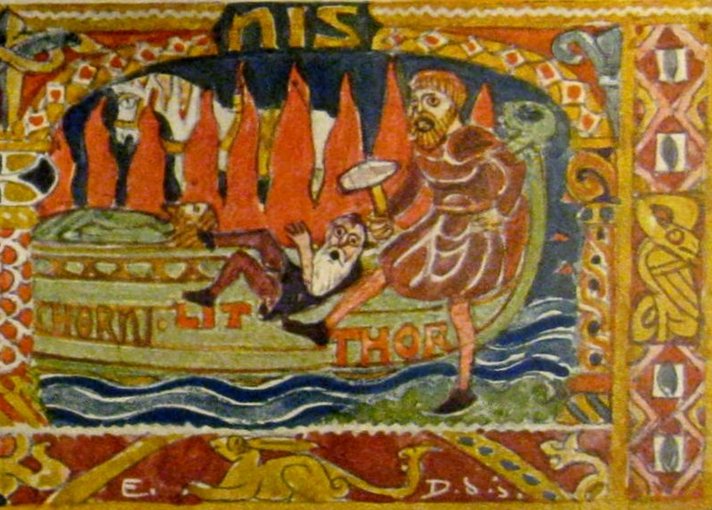
... According to Gylfaginning,
following the murder of Baldr by Loki, the
other gods brought his body down to the sea
and laid him to rest on the ship. They would
have launched it out into the water and
kindled a funeral pyre for Baldr but were
unable to move the great vessel without the
help of the giantess Hyrrokkin, who was sent
for out of Jötunheim. She then flung the
ship so violently down the rollers at the
first push that flames appeared and the
earth trembled, much to the annoyance of
Thor. Along with Baldr, his wife Nanna was
also borne to the funeral pyre after she had
died of grief. As Thor was consecrating the
fire with his hammer Mjolnir, a dwarf named
Litr began cavorting at his feet. Thor then
kicked [gaatu] him into the flames
and the dwarf was burned up as well ... |
|
CLOSE TO
THE FULL MOON: |
|
OCT 8 |
9 |
10 (283) |
|
Al Shaula-17
ALWAID (Mother Camels) =
β
Draconis, MAASYM (Wrist) =
λ
Herculis
(265.1),
SHAULA (Sting)
=
λ
Scorpii
(265.3),
KUMA =
ν
Draconis
(265.6),
σ
Arae (265.9)
HAMAL
(α ARIETIS) |
RAS ALHAGUE (Head of the Serpent Charmer)
= α Ophiuchi
(266.1),
SARGAS = θ Scorpii (266.3),
μ Ophiuchi, π Arae (266.5),
NAN HAE (Southern Sea) = ξ Serpentis
(266.6), AL
DHĪLI (The Wolf)
= ω Draconis,
ι Herculis (266.7) |
λ
Arae (267.1),
GIRTAB (Seizer)
=
κ Scorpii,
ο
Serpentis (267.6),
DSIBAN (Wolf Pair)
=
ψ
Draconis
(267.9) |
|
Dec 11 |
12 (346 =
366 - 20) |
13 |
|
°Dec 7
(*261 = 9 * 29) |
8 |
9 (343 =
7 * 7 * 7 |
|
'Nov 14
(318) |
15 |
16 (*240) |
|
"Oct 31
(304) |
"Nov 1
(*225) |
2 |
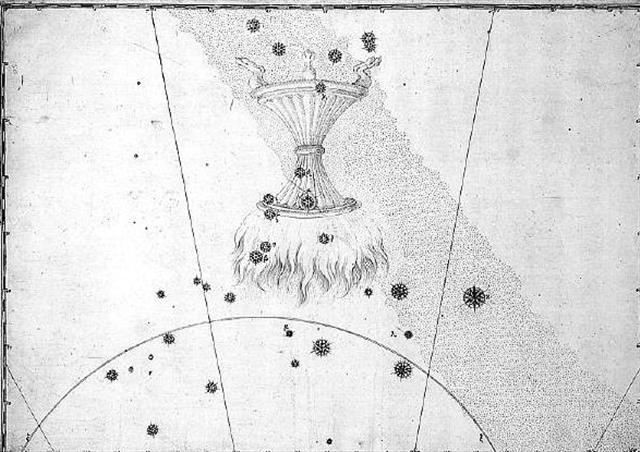
... It is known that in the final battle of
the gods, the massed legions on the side of
'order' are the dead warriors, the
'Einherier' who once fell in combat on earth
and who have been transferred by the
Valkyries to reside with Odin in Valhalla -
a theme much rehearsed in heroic poetry. On
the last day, they issue forth to battle in
martial array. Says Grimnismal (23): 'Five
hundred gates and forty more - are in the
mighty building of Walhalla - eight hundred
'Einherier' come out of each one gate - on
the time they go out on defence against the
Wolf.' That makes 432,000 in all, a number
of significance from of old. This number
must have had a very ancient meaning, for it
is also the number of syllables in the
Rigveda. But it goes back to the basic
figure 10,800, the number of stanzas in the
Rigveda (40 syllables to a stanza) [40 * 270
= 10800] which, together with 108, occurs
insistently in Indian tradition, 10,800 is
also the number which has been given by
Heraclitus for the duration of the Aiōn,
according to Censorinus (De die natali, 18),
whereas Berossos made the Babylonian Great
Year to last 432,000 years. Again, 10,800 is
the number of bricks of the Indian
fire-altar (Agnicayana). 'To quibble away
such a coincidence', remarks Schröder, 'or
to ascribe it to chance, is in my opinion to
drive skepticism beyond its limits.'
...
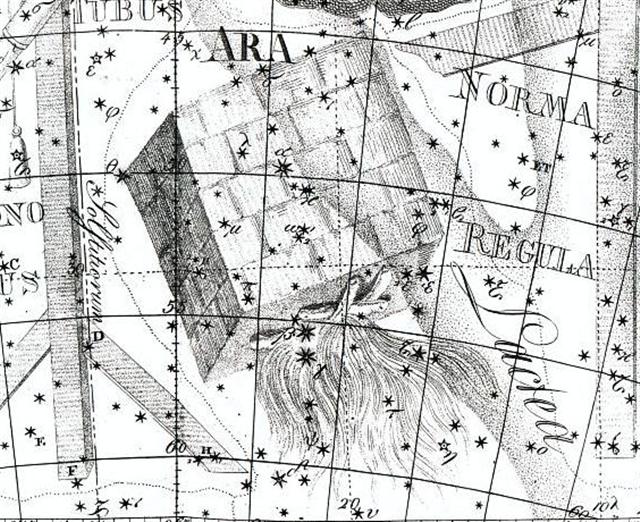 |
The reason seems to be that he had committed a great sin (hakaturou) and
therefore he had left:
|
... the
great high priest and monarch of the Golden Age
in the Toltec city of Tula,
the City of the Sun, in ancient Mexico, whose
name, Quetzalcoatl, has been read to mean
both 'the Feathered Serpent' and 'the Admirable
Twin', and who was fair of face and white of
beard, was the teacher of the arts to the people
of pre-Columbian America, originator of the
calendar, and their giver of maize.
His
virgin mother, Chimalman
- the legend tells - had been one of the three
sisters to whom God, the All-Father, had
appeared one day under his form of
Citlallatonac, 'the
morning'. The other two had been struck by
fright, but upon Chimalman
God breathed and she conceived. She died,
however, giving birth, and is now in heaven,
where she is revered under the honourable name
of 'the Precious Stone of Sacrifice',
Chalchihuitzli.
Quetzalcoatl,
her child, who is known both as the Son of the
Lord of the High Heavens and as the Son of the
Lord of the Seven Caves, was endowed at birth
with speech, all knowledge, and all wisdom, and
in later life, as priest-king, was of such
purity of character that his realm flourished
gloriously throughout the period of his reign.
His
temple-palace was composed of four radiant
apartments: one toward the east, yellow with
gold; one towards the west, blue with turquoise
and jade; one toward the south, white with
pearls and shells; one towards the north, red
with bloodstones - symbolizing the cardinal
quarters of the world over which the light of
the sun holds sway. And it was set wonderfully
above a mighty river that passed through the
midst of the city of Tula;
so that every night, precisely at midnight, the
king descended into the river to bathe; and the
place of his bath was called 'In the Painted
Vase', or 'In the Precious Waters'.
... In China, with Capricornus, Pisces, and a
part of Sagittarius, it [Aquarius] constituted
the early Serpent, or Turtle, Tien Yuen;
and later was known as Hiuen Ying, the
Dark Warrior and Hero, or Darkly Flourishing
One, the Hiuen Wu, or Hiuen Heaou,
of the Han dynasty, which Dupuis gave as
Hiven Mao. It was a symbol of the emperor
Tchoun Hin, in whose reign was a great
deluge; but after the Jesuits came in it became
Paou Ping, the Precious Vase. It
contained three of the sieu, and headed the list
of zodiac signs as the Rat, which in the
far East was the ideograph for 'water', and
still so remains in the almanacs of Central
Asia, Cochin China, and Japan ...

But the
time of his predestined defeat by the dark
brother, Tezcatlipoca,
was ever approaching, and, knowing perfectly the
rhythm of his own destiny,
Quetzalcoatl would make
no move to stay it. Tezcatlipoca,
therefore, said to his attendants, 'We shall
give him a drink to dull his reason and show him
his own face in a mirror; then, surely, he will
be lost'.
And he
said to the servants of the good king, 'Go tell
your master that I have come to show him his own
flesh!' But when the message was brought to
Quetzalcoatl,
the aging monarch said, 'What does he call my
own flesh? Go and ask!' And when the other was
admitted to his presence: 'What is this, my
flesh, that you would show me?'
Tezcatlipoca answered,
'My Lord and Priest, look now at your flesh;
know yourself; see yourself as you are seen by
others!' And he presented the mirror. Whereupon,
seeing his own face in that mirror,
Quetzalcoatl immediately
cried out, 'How is it possible that my subjects
should look upon me without fright? Well might
they flee from before me. For how can a man
remain among them when he is filled as I am with
foul sores, his old face wrinkled and of an
aspect so loathsome? I shall be seen no more, I
shall no longer terrify my people'.
Presented the drink to quaff, he refused it,
saying that he was ill; but urged to taste it
from the tip of his finger, he did so and was
immediately overpowered by its magic. He lifted
the bowl and was drunk. He sent for
Quetzalpetlatl, his
sister, who dwelt on the Mountain
Nonoalco. She came, and
her brother gave her the bowl, so that she too
was drunk. And with all reason forgotten, the
two that night neither said prayers nor went to
the bath, but sank asleep together on the floor.
And in
the morning Quetzalcoatl
said, in shame, 'I have sinned; the stain of my
name cannot be erased. I am not fit to rule this
people. Let them build a habitation for me deep
under the ground; let them bury my bright
treasures in the earth; let them throw the
glowing gold and shining stones into the
Precious Waters where I take my nightly bath.
And all this was done. The king remained four
days in his underground tomb, and when he came
forth he wept and told his people that the time
had come for his departure to the Red Land, the
Dark Land, the Land of Fire.
Having
burned his dwellings behind him, buried his
treasures in the mountains, transformed his
chocolate trees into mesquite, and commanded his
multicolored birds to fly before him,
Quetzalcoatl, in great
sorrow, departed ... |
He may have rowed away. There were 8 rows on each side
of La Rame (The Oar).
... Ira, Raparenga, Uure, Nonoma, and Ringiringi got up
[he ea] and left [went to, he oho] the
'Dark abyss [te poko uri] of Hau Maka' (i.e.,
Rano Kau), arrived at Hanga Te Pau, put the canoe into
the water [he hoa i te vaka], and sailed
off to [went to, he oho] Hiva, to Maori. Ira left
[for Hiva, for Maori, i ōho ai a Ira.ki hiva.ki maori]
on the twenty-fifth day of the month of October
('Tangaroa Uri'). When Ira's canoe
reached the islets (off the southwestern coast), Makoi
(who was staying behind) shouted [he rangi] the
following (after him): 'Eight
lands (are there), one has been found (or, an eighth
land has been found for the first time, evaru [ēvaru]
kainga katahi i ravaa), that is, Te Pito O Te
Kainga. During the fast journey, one cannot find the
seven lands [ehitu kainga] in the midst of dim
twilight. Once (Easter Island) has been lost [ka
ngaro ro ēra], not even eight groups of people
(i.e., countless boat crews) can find (it) again. - Ruhi
to the right, Pu to the left, necklace around the neck
of the figure of Hinariru at Papa O Rae!' [E:86]
And these were shaped from the wood of the Ash (Fraxinus
excelsior) - as in ashes (kihikihi).
... This Hercules is male leader of all orgiastic rites
and has twelve archer companions, including his
spear-armed twin, who is his tanist or deputy. He
performs an annual green-wood marriage with a queen of
the woods, a sort of Maid Marian. He is a mighty hunter
and makes rain, when it is needed, by rattling an
oak-club thunderously in a hollow oak and stirring a
pool with an oak branch - alternatively, by rattling
pebbles inside a sacred colocinth-gourd or, later, by
rolling black meteoric stones inside a wooden chest -
and so attracting thunderstorms by sympathetic magic ...
... Gronw Pebyr, who figures as the
lord of Penllyn - 'Lord of the Lake' - which was also
the title of Tegid Voel, Cerridwen's husband, is really
Llew's twin and tanist ... Gronw reigns during the
second half of the year, after Llew's sacrificial
murder; and the weary stag whom he kills and flays
outside Llew's castle stands for Llew himself (a 'stag
of seven fights'). This constant shift in symbolic
values makes the allegory difficult for the prose-minded
reader to follow, but to the poet who remembers the fate
of the pastoral Hercules the sense is clear: after
despatching Llew with the dart hurled at him from Bryn
Kyvergyr, Gronw flays him, cuts him to pieces and
distributes the pieces among his merry-men. The clue is
given in the phrase 'baiting his dogs'. Math had
similarly made a stag of his rival Gilvaethwy, earlier
in the story. It seems likely that Llew's mediaeval
successor, Red Robin Hood, was also once worshipped as a
stag. His presence at the Abbot's Bromley Horn Dance
would be difficult to account for otherwise, and stag's
horn moss is sometimes called Robin Hood's Hatband. In
May, the stag puts on his red summer coat. Llew visits
the Castle of Arianrhod in a coracle of weed and sedge.
The coracle is the same old harvest basket in which
nearly every antique Sun-god makes his New Year voyage;
and the virgin princess, his mother, is always waiting
to greet him on the bank ...


|















.jpg)

.jpg)





